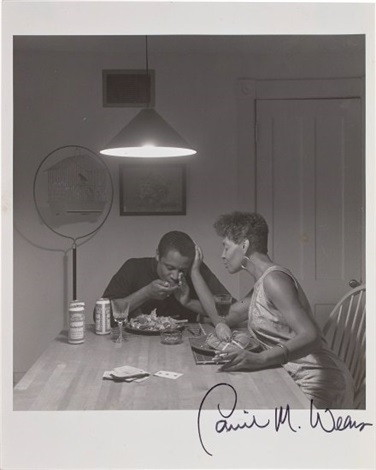

Yet when I examined the history of criticism and scholarship on her practice, I was stunned. I am so grateful that my colleagues Benjamin Buchloh and Carrie Lambert-Beatty kindly invited me to edit this volume of scholarship on the work of Weems, and because of who Carrie is we all thought it would be a straightforward process. Lewis: It is no exaggeration to say that Carrie Mae Weems, an extraordinary artist and thinker, is one of the most prodigious artists of our time. Gazette: How did you want to shape the book “ October Files: Carrie Mae Weems,” given the gap in scholarship on Weems?

The Gazette spoke to Lewis about mending this gap in scholarship by bringing together interviews, criticism, and theoretical analysis of Weems’ work from scholars and artists, including Weems herself. “Work is often over-exhibited (or instrumentally displayed) and undertheorized,” she said. She is perhaps best known for her photographic projects, including “The Kitchen Table Series” featuring intimate moments around a kitchen table, and “From Here I Saw What Happened and I Cried,” based on daguerreotypes depicting enslaved people.īut when Sarah Elizabeth Lewis, an associate professor of History of Art and Architecture and African and African American Studies, and Christine Garnier, a doctoral candidate, started compiling material for a new edited volume on Weems’ work, they realized there was a lack of existing scholarship, which “typifies a pattern, when it comes to many artists of color, but specifically Black artists,” said Lewis. The American artist Carrie Mae Weems for more than 30 years has been creating works largely centered on the lives of women, working-class people, and Black people.


 0 kommentar(er)
0 kommentar(er)
